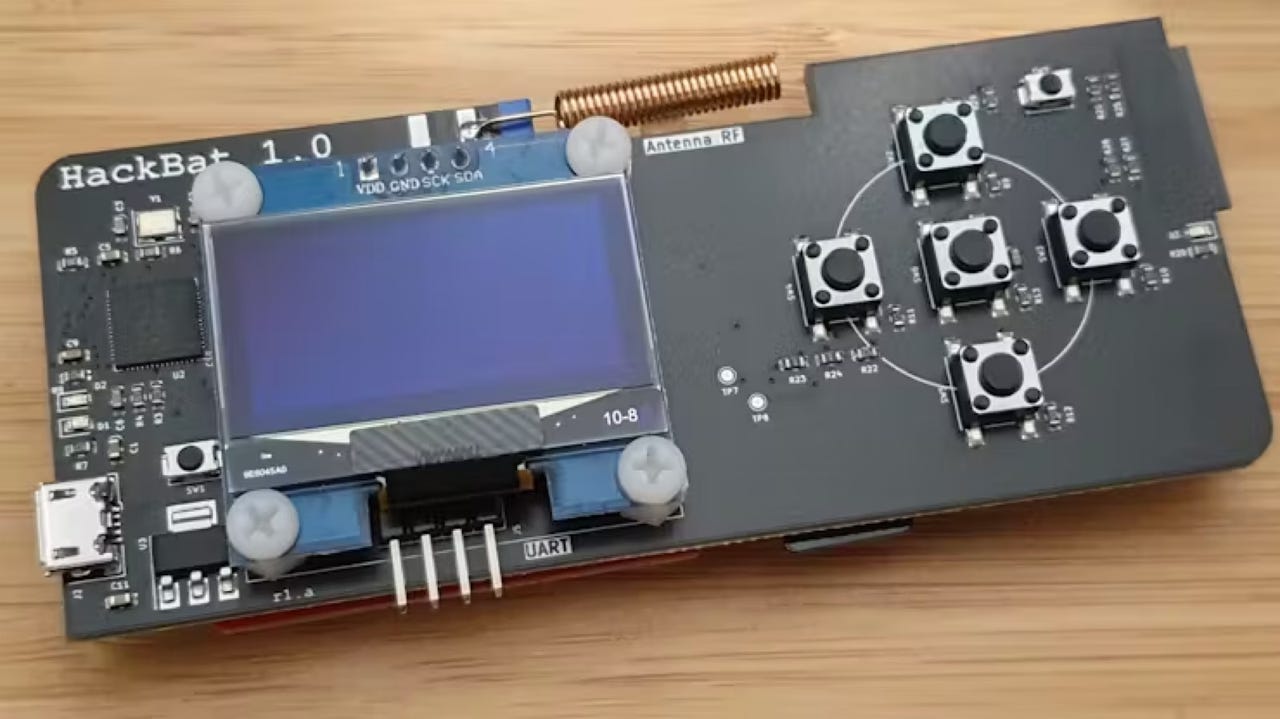
Like the Flipper Zero but want something a little more powerful? Then this open-source penetration testing tool may be for you. But you will have to build it yourself.
Or more accurately, you will have to get a company that prints circuit boards and adds the components to build one for you. That sounds complicated, but it isn’t, and the reward will be worth it.
Also: Flipper Zero: Geeky toy or serious security tool?
Called Hackbat, this pocket-sized tool is the brainchild of Pablo Trujillo, and it’s built around a custom PCB and a RP2040 microcontroller from the Raspberry Pi Pico W.
Don’t let the idea of custom PCBs scare you because Trujillo has made all the files available you need to have these manufactured, along with the information on all the components needed to populate the board, free of charge.
Hackbat has everything you need to carry out high-end penetration testing duties, with Wi-Fi, NFC, and RF to receive and transmit radio waves, a microSD card slot for storage, USB to allow it to carry out keystroke injection attacks, and a 128×64 pixels OLED display and buttons for human interaction.
If you’re eager to build your own Hackbat, you have the option to use the PCB printing service recommended by Trujillo — JLCPCB — or choose a service you prefer.
Also: How to unlock the Flipper Zero’s true power
However, if this is your first foray into assembling hardware like this, be prepared for a steep learning curve. A common challenge many newcomers face is component shortages. This may require you to hunt for equivalent components to substitute, which can be a significant part of the learning process. As for cost, that’s hard to pin down as component prices and even circuit board printing prices vary daily, but I priced it out the other day and it was about $40 if I had three made.
If you’re interested in security and electronics, this is a great project to sink your teeth into.




















+ There are no comments
Add yours